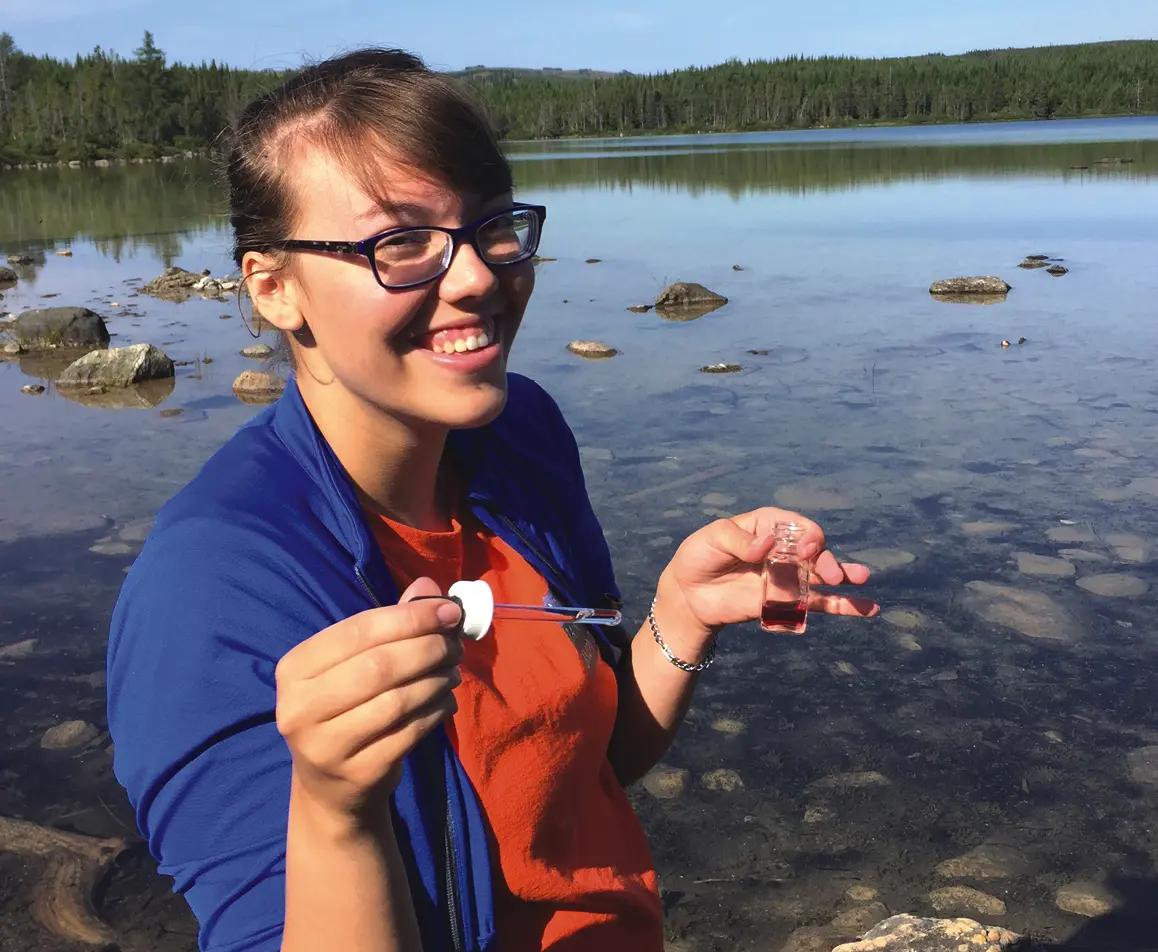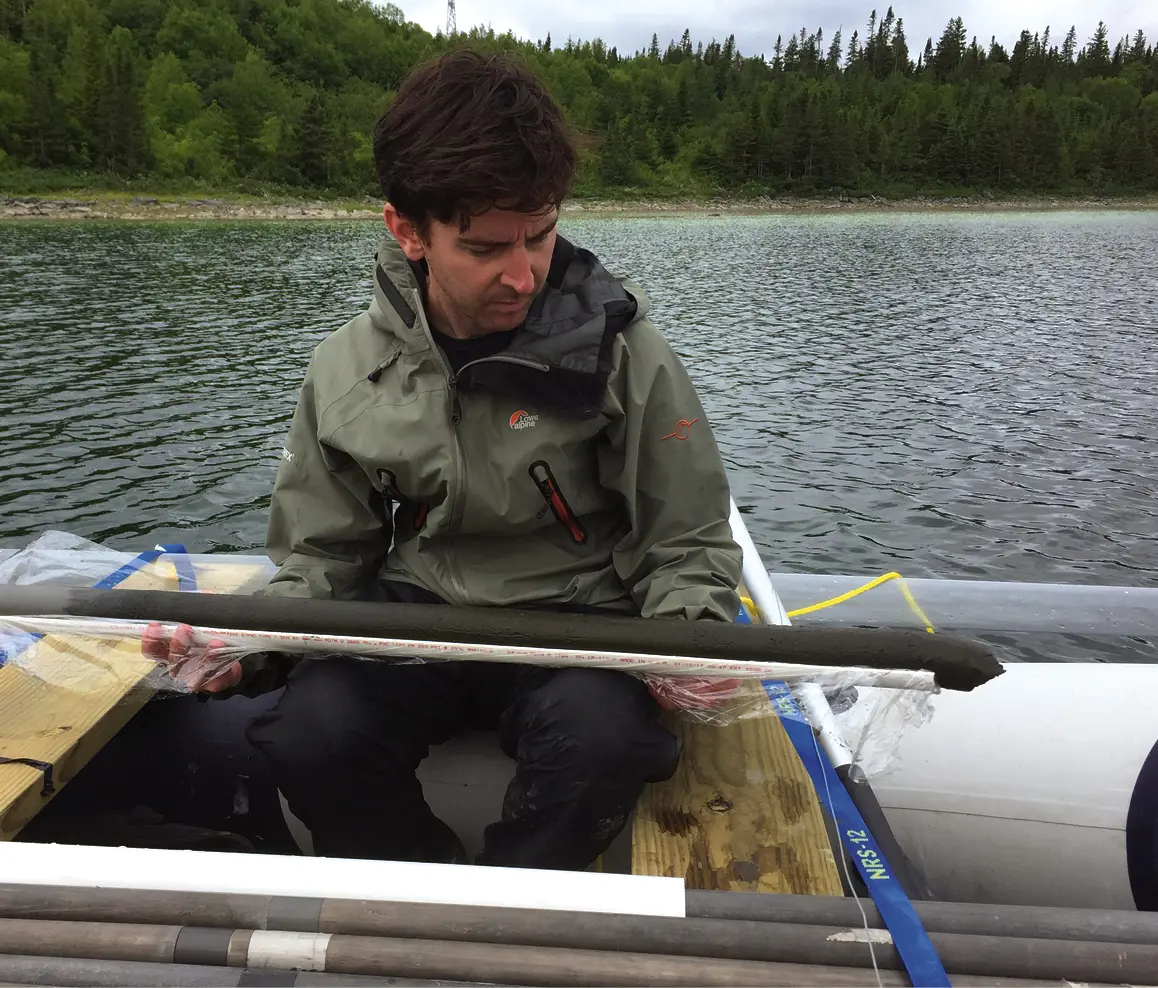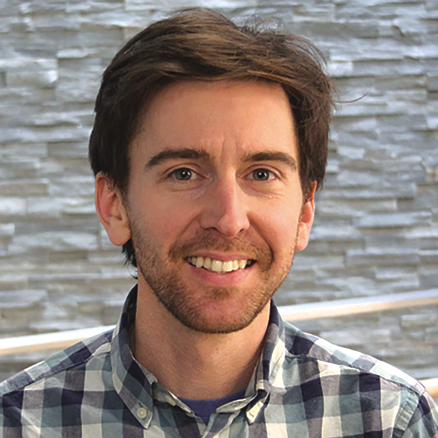He Digs Rocks


way to somewhere else, not a destination. Unless you’re
Matthew S. Finkenbinder, associate professor of geology at
Wilkes University. Finkenbinder, or Dr. F, or “Fink” as some
of his students call him, shows his students that on this
weathered strip of road, there is a tall rock face that serves
as a fascinating map to the past—and it measures time not in
centuries, or millenia, but millions of years.
In fact, it’s the absence of digital screens and gadgets—and being outdoors—that makes these outings so important to students. “A common attribute of students that are in environmental science and geology is a curiosity about nature and the love of the outdoors,” said Finkenbinder. Multiple field trips throughout the term are an important part of geology coursework.

As the students move more closely to the rock face, or “outcropping,” they note its layer-cake construction in their field books. “We have three formations here at this outcrop, the oldest of them that we’re seeing right here is between 360 to 320 million years old,” he said. As they measure the strata, or layers, in the rock face, touching what our world was made of millions of years ago, they are literally revealing its geologic history, which is important for the geologic mapping of the region. The identification of aggregate deposits, such as crushed stone and sand used in construction, as well as ores, or valuable minerals, and aquifers that transmit water to wells and springs, is critical for geologists. Finkenbinder still finds wonder in these discoveries. “I always see something new in an outcrop, which makes it endlessly fascinating.”
INSPIRED TO TEACH
The destination was Norman’s Pond in Newfoundland, where for two weeks the small research team camped outdoors and collected core samples. Although a little intimidated at first, Heilman ultimately gained experience, confidence—and knowledge. “I don’t think I’ve ever learned so much in a short period of time,” she recalled. “It was constant information, so I just listened. It was fascinating.”
That experience ended up being a turning point for Heilman. That summer, she switched majors to earth and environmental science, went on to get a master’s degree in education and now teaches earth science at a private school in Maryland. “I had no intention of being a teacher at the time, but working with Dr. Finkenbinder and having him as a mentor really influenced the way I teach now and my desire to communicate a love of science to my 10th graders.” she said. “My number one goal is to be as passionate about science as Dr. Finkenbinder is and to inspire my students, too.”
The research at Norman’s Pond was published this year, and Heilman was listed as a contributor.


Wintersteen is definitely hooked, and now is considering many of the career paths she can take when she graduates with her geology degree next year. “Over the summer, I had an internship with the Pennsylvania Department of Environmental Protection and I would like to continue doing government work once I graduate,” she said. “It was satisfying knowing that I was doing something good for the environment and also doing work that I love.”
Above: Students draw rock formations in their field notebooks.
